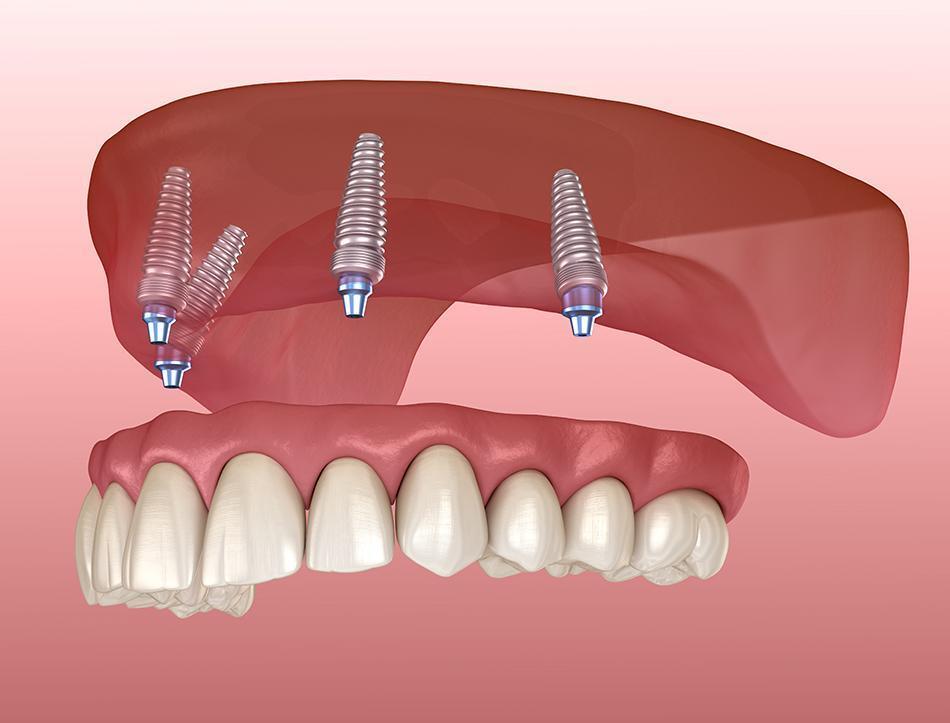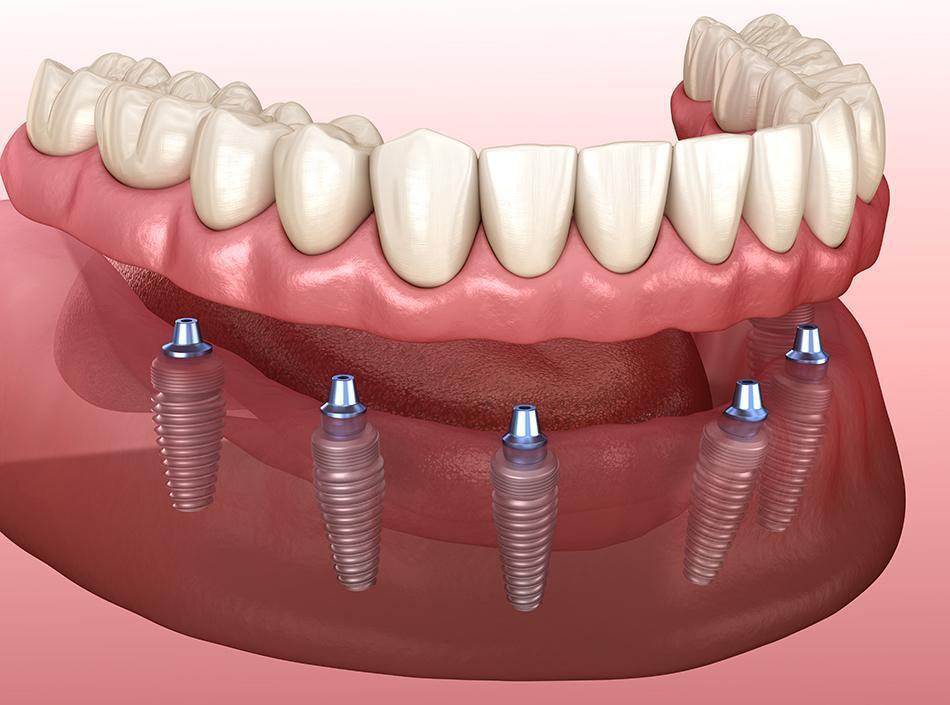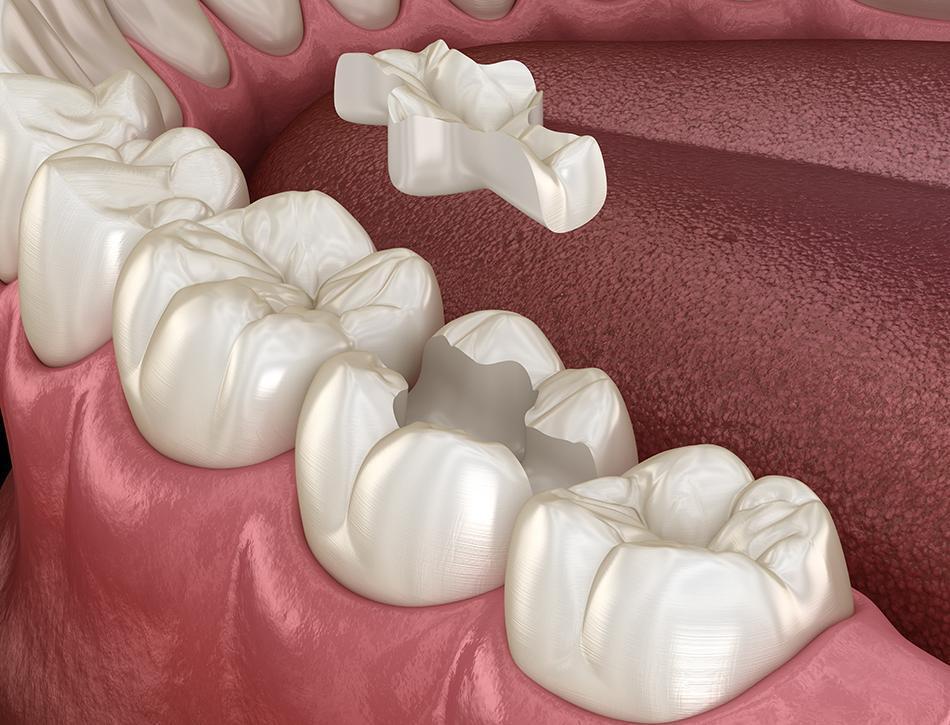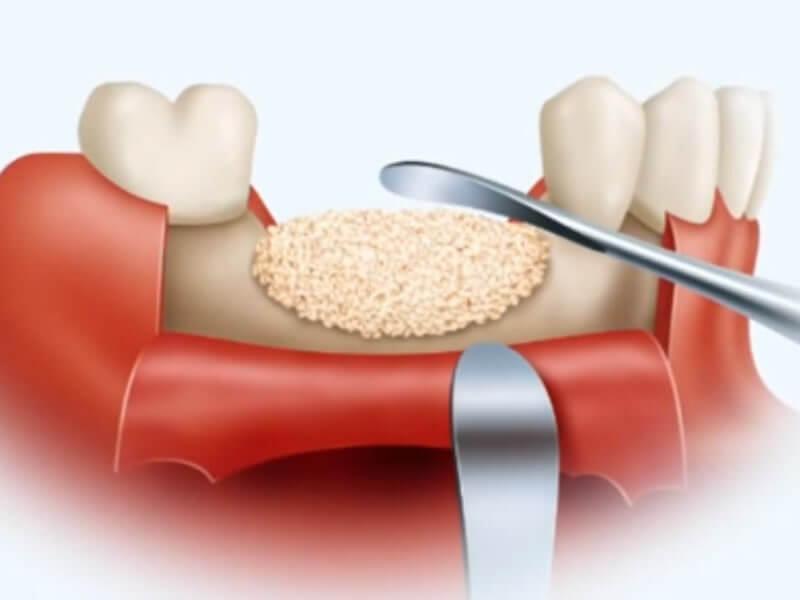Our services

Dental Implants
The dental implant is a screw made of titanium alloy placed in the jawbone. It functions as a root that stabilizes a prosthesis. Implants are used to replace one or more teeth. A crown, bridge or prosthesis is attached to the dental implant.
Advantages:
- Regain chewing function and dental aesthetics.
- Prevent bone resorption and jaw bone loss.

All-on-4
All-on-4 implants are a set of artificial teeth that are fixed on dental implants. They are surgically placed in your jawbone. They naturally reproduce the feel, fit and appearance of natural teeth.
Our dental center is one of the few clinics that uses surgical guides, which makes surgery minimally invasive, reliable and successful.
Benefits:
- You will have permanent teeth that can be brushed and cleaned like natural teeth.
- Must not be removed
- Do not need adhesives
- Restore your facial features and aesthetics

All-on-6
The All-on-6 treatment provides strong and secure attachment for replacement teeth, making this method much more stable and reliable than traditional denture attachment methods.
The All-on-6 treatment is an effective solution for people who have lost the majority of their teeth. Implants are used to support dental prostheses and maintain the structure of the bone tissue of the jaw after tooth loss. The location and placement of six implants provide a great amount of added strength, stability and long term benefit.
Our dental center is one of the few clinics that uses surgical guides, which makes surgery minimally invasive, reliable and successful.
Read More

Crowns and Bridges
We offer a variety of options for dental restorations.
Dental crowns and bridges are a fixed solution for missing or damaged teeth. This restorative procedure uses dentures to restore your smile to its natural state. A crown is used when the tooth structure is damaged or fractured. A bridge is used to replace one or more missing teeth.

Dental restoration
We offer direct and indirect tooth restorations as well as root canal treatments.
Direct tooth restoration is the immediate placement of a filling in a prepared tooth decay.
Indirect tooth restoration involves custom tooth replacements in the form of crowns, onlays or inlays and requires more than one visit as these are fabricated in a lab. Inlay, onlays and crown can be made of different materials Read More

Oral Surgery
We offer a wide variety of oral and dental surgery procedures to our patients and an optimal professional experience. We work with state-of-the-art medical equipment. Our oral surgery center only accepts the highest standard of protocols.
Frequent problems treated by our dental surgeons are:
- Extraction of impacted wisdom teeth.
- Placement of implants, bone grafting and sinus lift.
- Diagnosis and treatment of soft tissue disorders of the mouth.
- Diagnosis and treatment of jawbone pathology.

Sinus lift
The maxillary sinus is a cavity located above the upper molars.
When the upper back teeth are extracted, the sinus generally tends to widen downwards, therefore the bone volume will not be sufficient to integrate an implant.
A bone grafting surgical procedure called “sinus lift” is performed in case of bone loss.
An artificial bone substance is placed in the lowest part of the sinus. A healing period of 6 to 9 months is usually necessary.

Bone Grafting
The jawbone loses its volume when the teeth are extracted. Gum disease can also reduce jaw size and bone strength.
Dental bone grafting is a minor surgical procedure.
The goal of bone grafting is to build a strong bone base into which dental implants can be inserted.

X-ray and CBCT (3D-scan)
We use the latest models of digital radiography and 3D imaging devices (CBCT). Cone-beam computed tomography (CBCT) is a variation of traditional computed tomography (CT). The CBCT system captures data using a cone-shaped x-ray beam in a single rotation. The data is used to reconstruct a three-dimensional (3D) image of the patient’s teeth and jaws. A CT scan is needed to assess the volume and quality of the jawbone.
.
